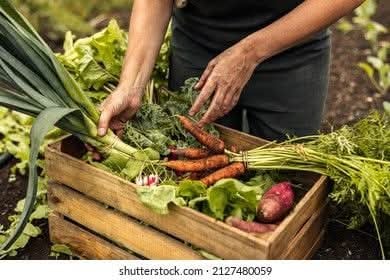Sustainable Harvesting Practices: How to Grow and Gather Food Responsibly
Overview: This post can guide readers on how to adopt eco-friendly harvesting methods for both personal gardens and larger-scale farming. It can highlight techniques that conserve resources, minimize waste, and promote biodiversity. Topics to cover: 1. Permaculture Harvesting Explain how permaculture focuses on working with nature, designing systems that are self-sustaining and low-maintenance. This method includes harvesting crops in a way that preserves soil health and promotes long-term sustainability. 2. No-Till Farming Discuss the benefits of no-till or minimal-till farming, which avoids disrupting the soil structure and helps maintain healthy ecosystems, water retention, and nutrient cycling. 3. Selective Harvesting Instead of harvesting all the crops at once, selective harvesting allows plants to continue growing and provide food for longer. This method also helps preserve plant biodiversity and reduces the chances of pest infestation. 4. Rainwater Harvesting Promote the use of rainwater collection systems to irrigate crops, reducing the need for water from traditional sources and conserving water resources. 5. Composting After Harvest Show how composting plant waste after harvest not only reduces landfill waste but also replenishes the soil, returning essential nutrients for future crops. 6. Polyculture Over Monoculture Encourage polyculture, which involves growing a variety of crops together, as opposed to monoculture. This practice enhances biodiversity, prevents soil depletion, and reduces the risk of disease. 7. Seasonal Harvesting Explain how harvesting crops in alignment with their natural growing seasons helps preserve the environment and reduces the need for artificial growing methods like greenhouses or heavy pesticide use. 8. Wildcrafting and Foraging Foraging wild foods responsibly is an eco-friendly way to gather food without contributing to large-scale industrial agriculture. Focus on sustainable foraging practices and the importance of knowing what to harvest and when. 9. Crop Rotation Rotate crops seasonally to prevent soil depletion and the build-up of pests and diseases. This method promotes healthy soil and reduces the need for synthetic fertilizers. 10. Community-Supported Agriculture (CSA) Highlight how participating in or starting a CSA promotes local, sustainable harvesting. CSAs connect local farmers with consumers, reducing the environmental impact of transporting food and supporting eco-conscious practices. Conclusion: Eco-friendly harvesting practices not only benefit the environment but also support local ecosystems, promote biodiversity, and provide fresh, healthy food. By implementing these sustainable methods, gardeners and farmers can help reduce their environmental footprint while fostering a healthier planet.


My post content